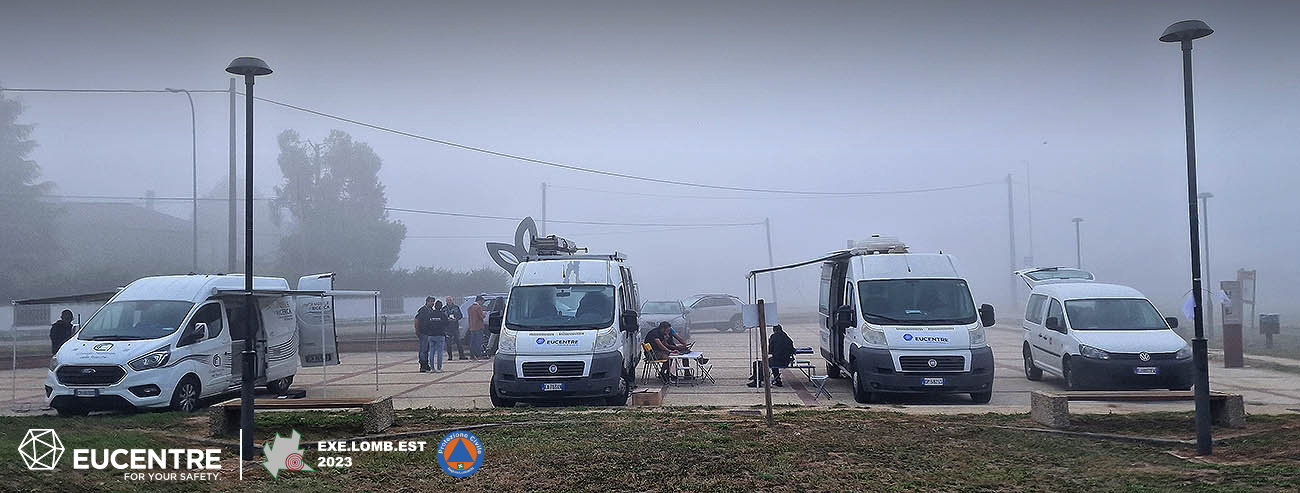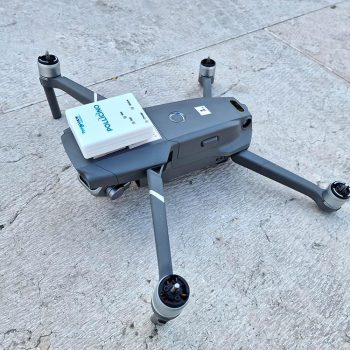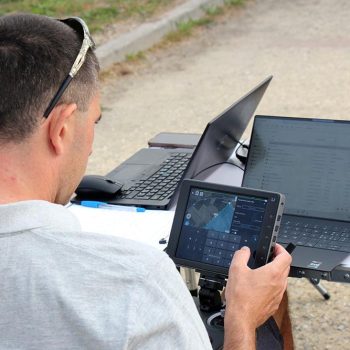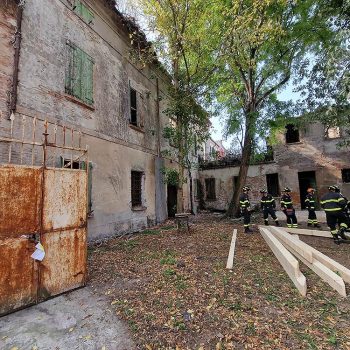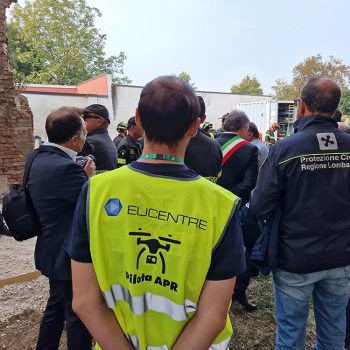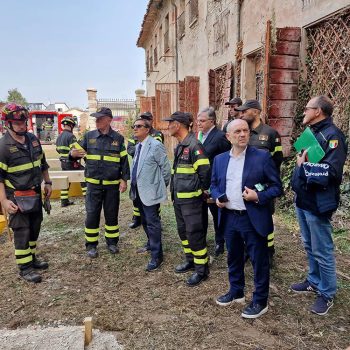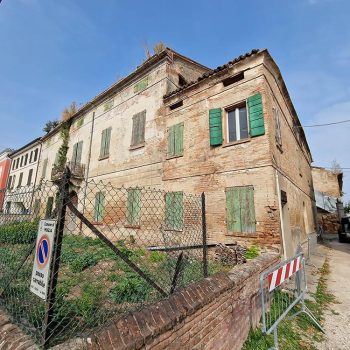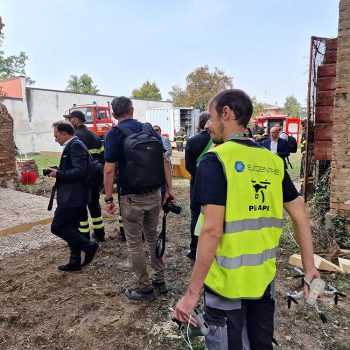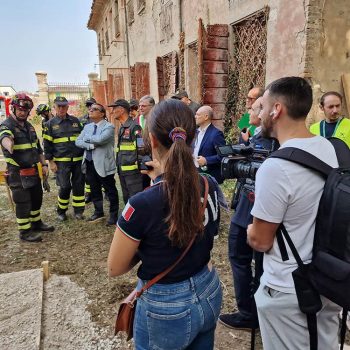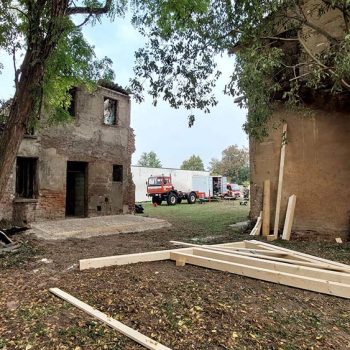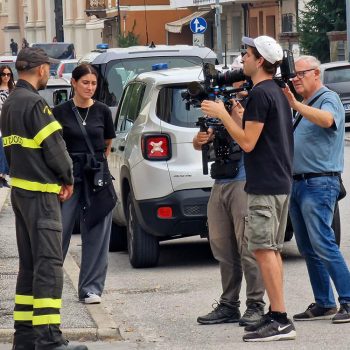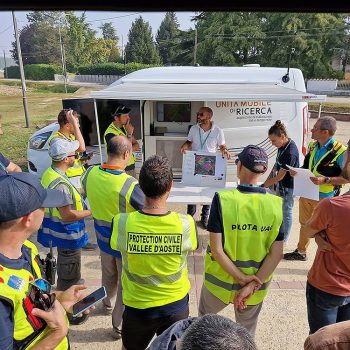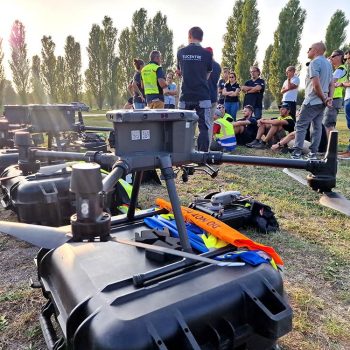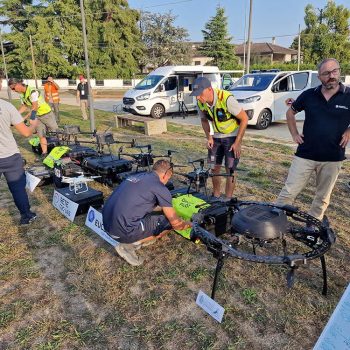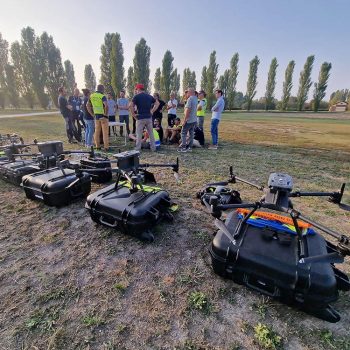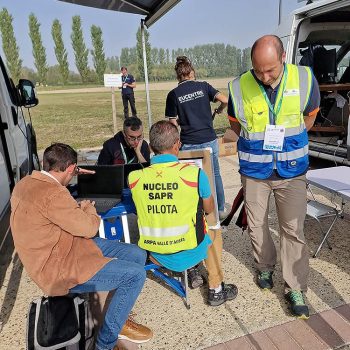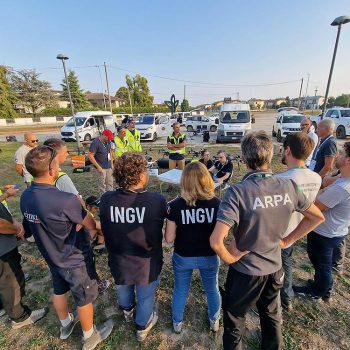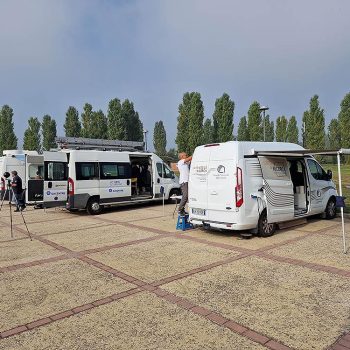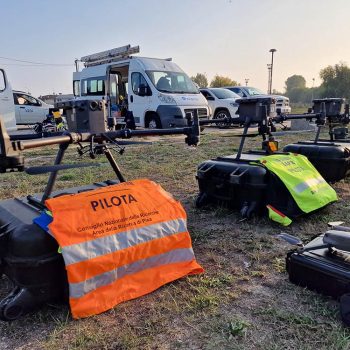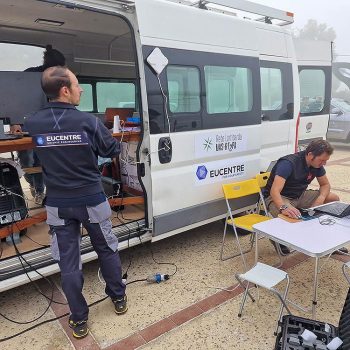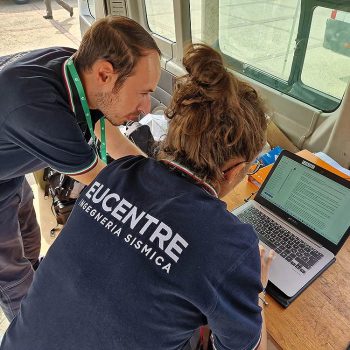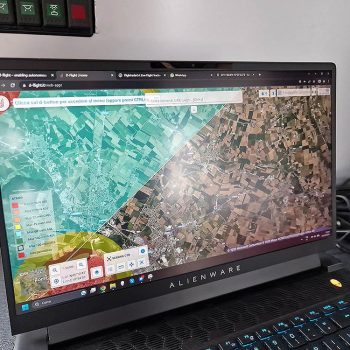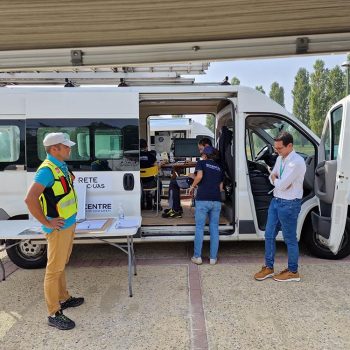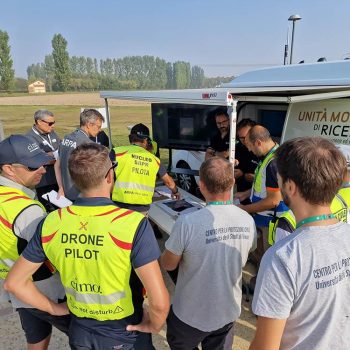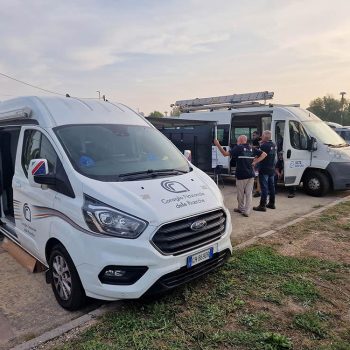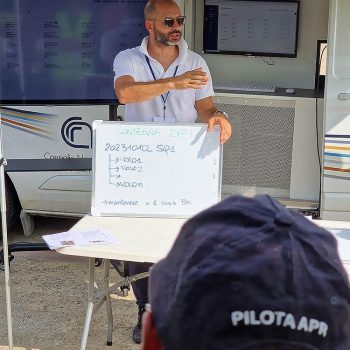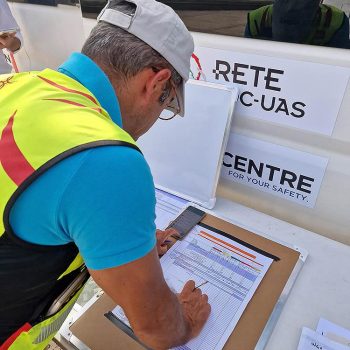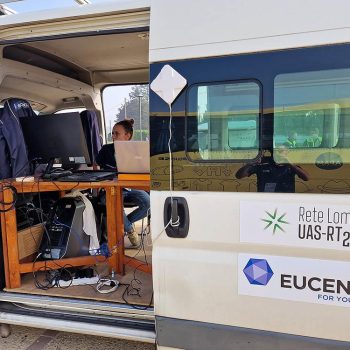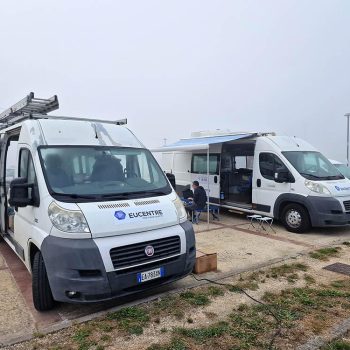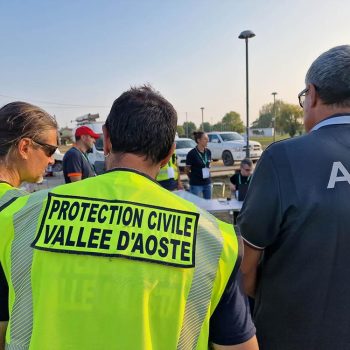For a week, teams from the Italian Civil Protection Department’s centers of expertise that employ drones in their activities, are meeting in Lombardy Region for an exercise: simulating an earthquake in the Mantua area, UAS pilots are working on the technical aspects of rapid assessment in emergencies
Data collection, coordination and communication, interaction with other operators and managers, use of aerial space – all in an emergency context, such as a flood or an earthquake, are. are the main objectives of the technical exercise focused on the use of drones for civil protection activities, taking place between Oct. 9 and Oct. 14, in conjunction with and on the occasion of the fifth edition of Italian Civil Protection Week. The exercise has been organized by the Civil Protection Organizational Unit of the Lombardy Region, in collaboration with Polis Lombardia and Anci Lombardia, and coordinated by EUCENTRE Foundation, the seismic risk competence center of the Italian Civil Protection Department.
In fact, an earthquake affecting the province of Mantua is the imaginary scenario in which the exercise takes place. In a vast emergency scenario, whose potential damage has a major impact on the territory, to have a quick and updated picture of the situation –damages, extension of impacted areas, limitations for the rescue operations – is critical. This is known as rapid assessment – a first, quick assessment of the situation in an emergency context, conducted by the Italian Civil Protection Department’s centers of expertise. Among the resources that can be fielded for this purpose are the teams of the drones nuclei of different centers of competence (UAS or Uncrewed Aircraft Systems): EUCENTRE Foundation, INGV, CNR, ARPACAL, ARPA Lombardia, ARPA VDA, UNIFI Civil Protection Center and CIMA Research Foundation.
A major aspect is the protocols for the activation of UAS units, regarding the management and sharing of airspace (think, for example, of the eventuality of the arrival of a rescue helicopter). For the first time, coordination protocols for air operations and activation agreed for the occasion with the CNVF, ENAC and ENAV/D-flight are being tested.
Another part of the exercise is focused on technical aspects. First, regarding data collection: the surveys are carried out by the various teams, each of which proceeds to map a specific area adjacent to the others, and they must be comparable with each other. Therefore, common protocols must be well established. A second aspect addressed concerns activation of UAS nuclei, safety and coordination protocols, not only for the synchronous flight of the drone teams but, more generally, for the management of the flight space (think, for example, of the eventuality of the arrival of a rescue helicopter). Finally, the exercise involves the rapid processing of the data collected, which must be made available to the coordination center in time to organize the operations.
These initial activities will be followed by more specific ones dedicated to some technical and detailed aspects of drone assessments in an emergency context. For example, a survey on specific elements, such as a road or a cultural asset, for example a church, or the estimation of the amount of debris to be mobilized in order to have a communication route. It is, in this case, not a quick assessment, providing a global look at the situation, but an analysis that requires different technical arrangements and specific and more complex operational protocols.
Beyond the expertise on different types of hazards of different centers of expertise, drone surveying capabilities share some common elements, particularly in their possibility to reconstruct the state of places affected by a catastrophic event. This is why centers of expertise whose activities do not concern seismic risk are also involved in the exercise.

